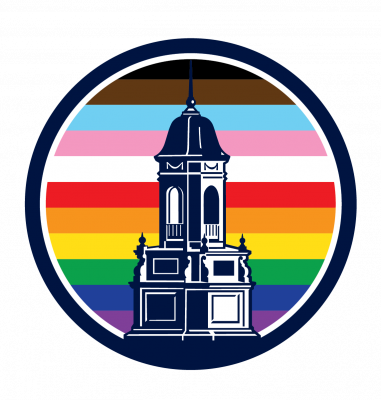The author of today’s blog post is Nathan Braccio, one of the EMSWG’s co-coordinators and a recipient of one of the Folger Consortium Travel Awards. Nathan is a PhD candidate in the History Department.
This summer I again visited the Folger with the generous support of UCONN’s Early Modern Studies Working Group. The Folger has provided invaluable sources for my dissertation, which, among other things, traces the development of cartography and surveying in New England. While my previous trips to the Folger have explored their collection of atlases and cosmographical texts, this trip focused on something far more mundane. Between 1600 and 1700, English mathematicians and surveyors made slightly more than a dozen manuals meant to teach the reader how to survey. Coming in a variety of shapes and sizes (including small versions meant to be kept in your pocket), these manuals claimed that they would teach literate readers the important skill of surveying. My hope was that by studying these manuals I could answer three questions: what activities, tools, and knowledge constituted surveying in the 17th-century? How did surveying change? And what is the relationship between surveying and mapping in the 17th-century?
While the answers to these questions existed in the surveying books, they were buried deeply within dozens of pages of geometry, tables of sin and tan values, equations, and diagrams of men shooting cannons at various angles. Perhaps what became most striking after looking through four books, all containing these elements and often mentioning each other, was the redundancy of the manuals. Of course, each author claimed a unique element, but the original parts occupied a handful of pages in what were often several hundred page long texts. Each author, after describing all the tools a surveyor needed in one chapter, would spend the largest part of the book examining how to use a “plaine table” to make plots of land. Almost all of them included chapters on the same techniques and the same tricky landscapes that required different approaches (such as a forest, a body of water, and hilly country). Two of them even gave near identical advice on how to make a survey look aesthetically pleasing after the initial drafting was done.
The formulaic nature of these manuals, several of which saw multiple printings, suggests a demand and profits to be made. One mathematician, William Leyborne, even made two surveying books in short succession. The question then emerges, why such a demand? Surveying had long been part of English culture and the first surveying manual in England was published in the 1540s. However, the manuals of the 1600s had several new elements. Technology and mathematics both saw improvement. The books spoke of new kinds of surveyors’ chains, new kinds of protractors, sextants, and of course the surveyors table. Whereas surveying before 1600 had required less math, simple instruments, and a written record, these new manuals implied requirement for higher technical skills and an ability to “plotte” (map). The confluence of a more technically rigorous surveying and a continued high likelihood of people encountering a survey in their life made at least some familiarity with the skills involved useful. While I cannot be sure, it seems likely that the redundant and dry manuals held by the Folger are indicative of and responding to this change.


